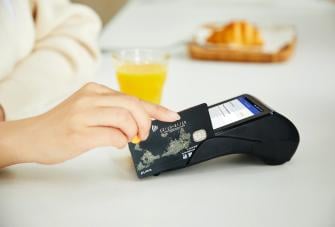Unified Commerce Power: POS Systems Connecting Online and Offline Retail
Today, many businesses use various channels, sometimes known as omnichannel retail, including physical stores and e-commerce websites. True power, however, goes beyond the outdated paradigm of compartmentalized operations where online and offline hardly communicate with one another; it involves synchronizing various channels.
The point of sale (POS) system is at the center of this revolutionary change. It is developing into the central command center, the actual center of contemporary commerce, and is far from being only a digital cash register.

Source: Pexels
Modern POS systems are essentially the key facilitators of this unified commerce, allowing you to effortlessly achieve online and offline retail integration and unleash substantial, real business power.
Core mechanisms: How POS bridges online and offline worlds
According to Statista, American consumers most frequently responded with "debit card" and "cash" when asked about the types of payments made at points of sale in their poll. In 2024, 10,151 individuals in the US participated in the online survey.
But how do integrated POS systems really manage to connect everything? It comes down to a few essential elements:
Real-time inventory sync
Everywhere, you are aware of what you have.
Imagine if your modern POS systems provided you with a single, clear view of all of your inventory, including what is in the warehouse, Store A, Store B, and what is offered online. This view is updated quickly.
This is the reason why well-known services like "Click & Collect," "Buy Online, Pick Up In-Store" (BOPIS), and shipping an online item from a nearby store function properly. The major victory? You prevent goods from collecting dust in one spot and significantly cut down on those irksome "out of stock" times for clients. An effective POS system for retail enables exactly that - inventory transparency, reduced overstocking, and fewer "out of stock" moments.
Unified customer data
Considering each client as a VIP.
Centralised POS technology helps businesses treat every customer like they’re special, using unified profiles built through omnichannel POS integration. Regardless of whether customers shopped online or in-store, the system maintains a single profile that records their purchases, interests, and loyalty status.
This implies that a customer's internet browsing history can be used by your team to provide tailored in-store recommendations, or an online shopper may get suggestions based on a prior in-store purchase. Additionally, your loyalty plans and exclusive deals function flawlessly in all environments—no more complicated, disparate systems.
Seamless orders and returns
Facilitate easy purchasing (and returning).
Using a retail POS system that supports seamless order and return management reduces friction for staff and shoppers alike. Your staff can quickly retrieve items for customer pickup or prepare them for shipping when online purchases appear directly on your in-store point of sale system.
Additionally, a big favorite among your customers is the ease with which they may exchange or return items they purchased online to any of your physical locations. Regardless of where the transaction began or ended, it just makes the entire payment process clear and hassle-free.
The “power” unlocked: Tangible benefits of POS-driven unification
Your entire company benefits when your point-of-sale system serves as its brain. This is how that "power" manifests itself:
Happier customers who keep coming back (enhanced customer experience and loyalty)
It all comes down to giving your customers a positive buying experience, regardless of how they choose to do it.
- Everywhere, it simply seems like your brand: The experience is seamless and reliable whether customers are in your store, on your website, or within your app. There are no unexpected disconnections.
- Super convenient shopping: Consider simple choices like returning an online purchase to a physical location or purchasing online and picking it up in-store. Customers adore this adaptability.
- They feel understood: Customers feel appreciated and become much happier when your employees (or website!) are able to provide tailored suggestions based on what they truly like (because all of their buying information is in one location).
Smoother operations and saving money (operational efficiency and cost reduction)
Things simply function much more smoothly behind the scenes, which typically results in financial savings.
- Improved stock management: You'll know exactly what you have and where, which reduces product waste from overstocking and sales loss from unavailable popular items. Additionally, this reduces the amount of money you have invested in inventories.
- Instead of working harder, your team works smarter: Your employees will find it much easier to handle returns and complete online orders from the store. Eliminate the need to manage several cumbersome systems.
- Reduced headaches and double-work: You don't have to spend hours trying to match online sales with in-store records or enter the same information ten times when you have a single source of truth for your data.
Knowing your business better and adapting faster (data-driven insights and business agility)
You are able to make more informed decisions more quickly because you have a far better understanding of what is actually happening.
- The big picture on sales & customers: You can view everything in one location, including which products are actually popular, how customers purchase across channels, and what sells better online versus in-store.
- Guess less, plan better: You may become much more adept at anticipating what your consumers will want next and how much inventory you'll need with all this connected data.
- Adapt quickly: By promptly identifying patterns or changes in client behavior, you can make adjustments to your business more rapidly, such as altering promotions, updating inventory, or improving your online experience.
More sales and a healthier bottom line (increased sales and revenue growth)
All of this eventually results in more money in the bank.
- Never miss a sale: Connected and real-time inventory POS allows you to make a sale even if an item is out of stock online but still available at a neighboring store, or vice versa.
- Larger shopping carts: People are more likely to make purchases when you can quickly recommend related products or upgrades across channels (for example, displaying online bestsellers to an in-store consumer or recommending items for in-store pickup online).
- Clients remain longer: Happy consumers are far more likely to spend more money with you over the course of their lifetime if they enjoy wonderful, convenient encounters. It all comes down to cultivating that loyalty.
Key considerations for POS-led unified commerce
For a genuinely connected experience, it's important to choose the correct point-of-sale system rather than simply any one. Consider these:
- Is it able to get along with others? (POS system with ecommerce integration):
Your POS must cooperate. Make sure it can easily connect to your CRM, ERP, and e-commerce platform (Shopify, WooCommerce, etc.). Effective "APIs"—think software translators—are needed here.
- Safeguarding everyone's information (data security & compliance):
Combining customer and sales data requires security. Your point-of-sale system must have strong security and help you comply with industry rules like PCI for payments to protect your sensitive data.
- Will it expand alongside you? (proofing for the future and scalability):
You recognize your company's size will change? Choose POS systems that can handle more customers, products, locations, and possibly future sales channels. You don't want your system outdated in a year or two.
Our Complete Solution
Delight shoppers as you speed up sales and grow your business. Tailor your Epos Now retail POS business tools to your exact needs with the Epos Now AppStore.
POS as the indispensable engine of modern commerce
As we've seen, small POS systems have changed significantly. It has become the core of a holistic commerce strategy, spanning beyond transactions.
Your online and offline life depend on it to communicate and work as one. Consider it more than a countermounted tech device.
Cloud POS systems for multichannel operations handle complicated responsibilities including real-time inventory synchronization, consumer buying behaviors, and order and return simplification across all channels. In today’s competitive environment, having a physical store and a website isn’t enough - POS systems for omnichannel retail are now the engine of success.

Source: Pexels
When those experiences blend, actual power—the competitive advantage—occurs. Companies who get the notion and use their POS system to establish relationships will succeed.
They will boost income by improving customer loyalty, optimizing operations, making data-driven decisions, and more. If you ignore your point-of-sale system's ability to unify commerce, you risk losing ground.




